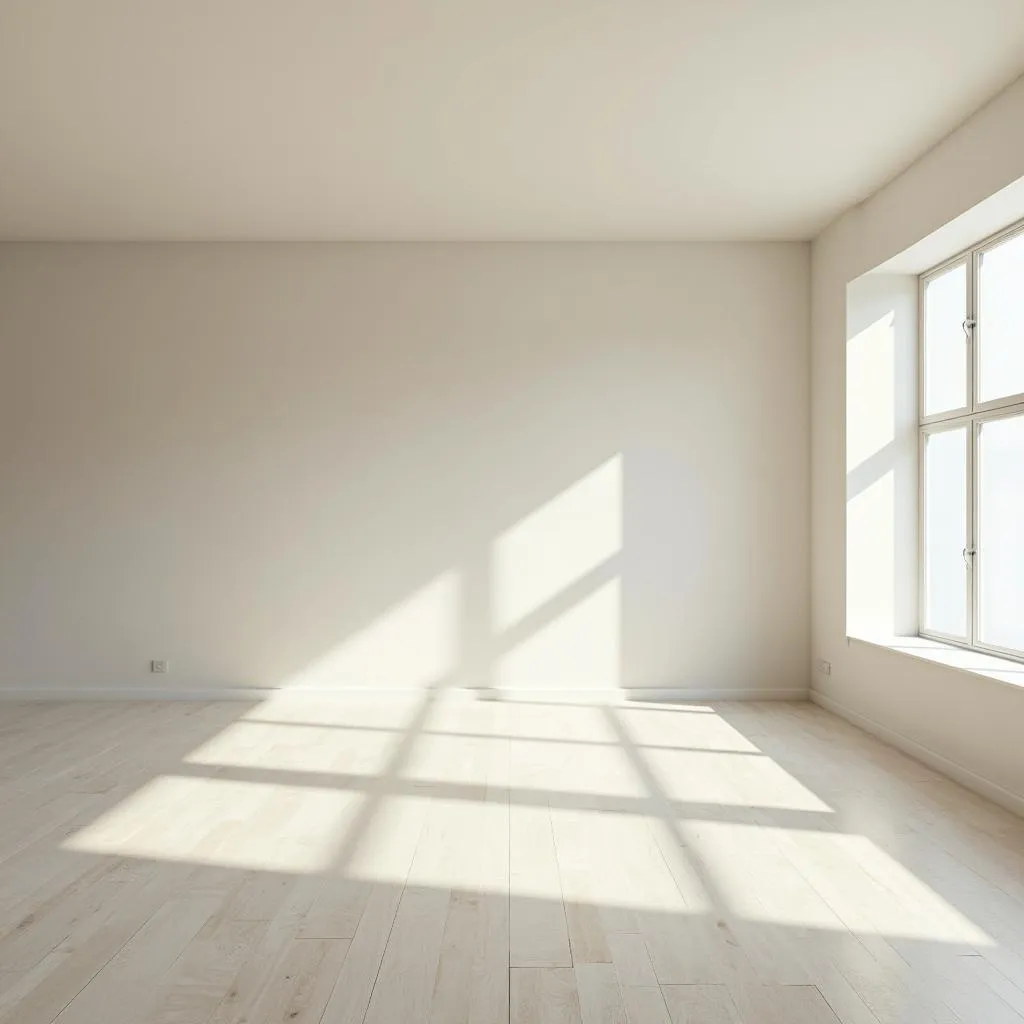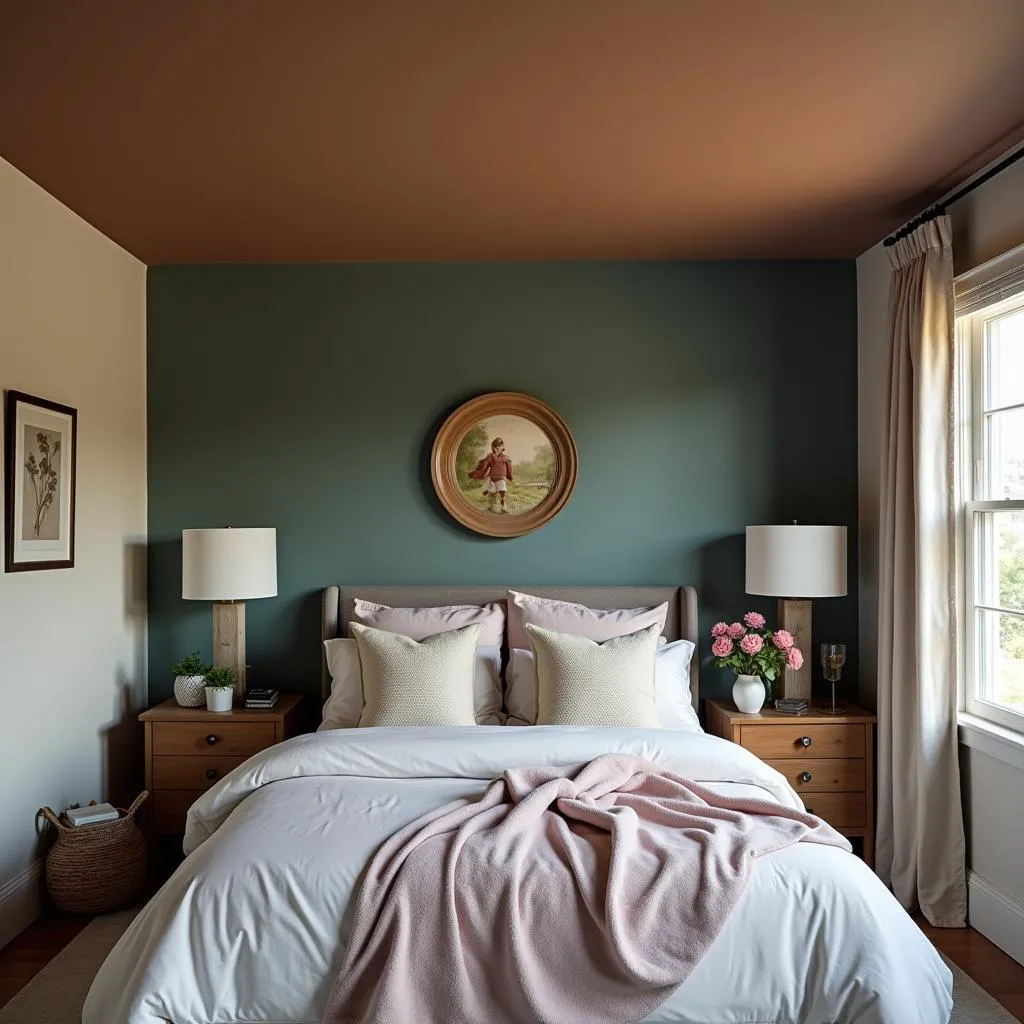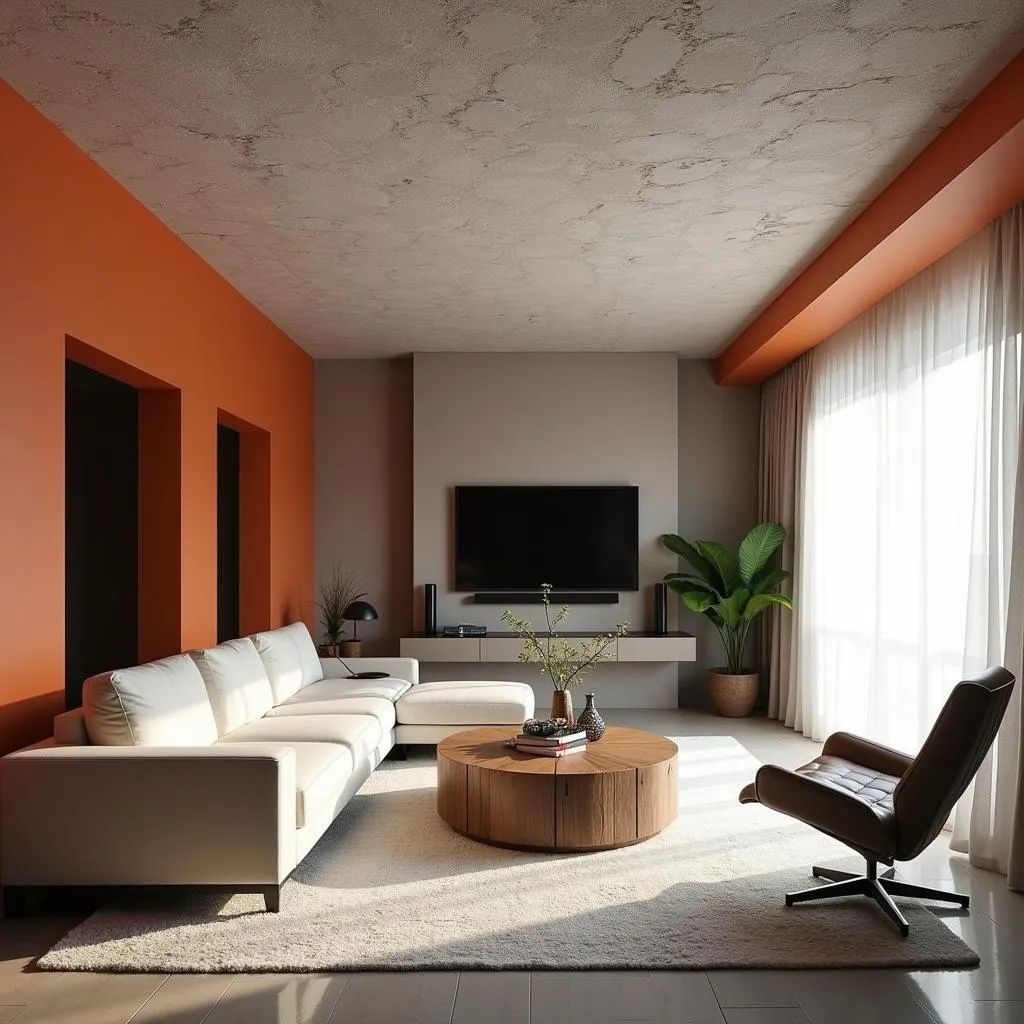The age-old question that haunts every homeowner embarking on a painting project: should you paint the ceiling the same color as the walls? It’s a decision that can dramatically impact the overall feel of a room, influencing its perceived size, atmosphere, and even the way your carefully curated decor pops. While there’s no one-size-fits-all answer, understanding the nuances of this design choice can empower you to make informed decisions that align with your aesthetic vision and lifestyle.
Breaking Down the “Same Color” Ceiling Debate
Choosing whether to unify your ceiling with your wall color or create a distinct contrast comes down to a delicate balance of personal preference and design principles. Let’s explore the pros and cons of each approach:
Painting the Ceiling the Same Color as the Walls: A Seamless Transition
 Living room with seamless ceiling and wall color in a light neutral tone
Living room with seamless ceiling and wall color in a light neutral tone
Pros:
- Enhanced spaciousness: Painting the ceiling the same color as the walls, especially in lighter shades, can visually expand the room by blurring the lines where they meet. This technique is particularly effective in smaller rooms or those with lower ceilings.
- A cohesive and calming ambiance: A monochromatic color scheme can evoke a sense of tranquility and harmony, creating a soothing retreat from the outside world.
- Highlighting architectural details: If your room boasts intricate moldings, ceiling medallions, or interesting architectural features, a unified color scheme can draw attention to these details without overwhelming the space.
Cons:
- Lack of definition: In some cases, painting the ceiling the same color as the walls can make the room feel less defined or “boxy,” particularly in rooms with simpler layouts.
- Potential for monotony: While a monochromatic look can be elegant, it can also feel monotonous if not executed carefully. Introducing subtle variations in texture or sheen can help prevent this.
Contrasting Ceilings: Defining Spaces with Color
 Bedroom with a contrasting ceiling color – a darker hue than the walls
Bedroom with a contrasting ceiling color – a darker hue than the walls
Pros:
- Visual Interest and Depth: A contrasting ceiling color can add an element of surprise and drama, creating a focal point and breaking up the monotony of a single color.
- Defining Spaces: In open floor plans, a contrasting ceiling color can help delineate different areas, such as the living room versus the dining area, without the need for physical dividers.
- Heightening the Illusion of Height: A lighter ceiling color can make the ceiling appear higher, particularly when paired with darker walls.
Cons:
- Overwhelming Smaller Spaces: In compact rooms, a contrasting ceiling color can make the space feel smaller or more enclosed.
- Trickier Color Coordination: Selecting complementary or contrasting colors for the walls and ceiling requires careful consideration to avoid clashing or creating an unbalanced look.
Factors to Consider When Making Your Decision
Navigating the “same color” ceiling conundrum goes beyond simply weighing the pros and cons. Here are some additional factors to guide your decision:
- Room Function: The purpose of the room plays a significant role in color choice. For instance, a serene bedroom might benefit from a unified color scheme, while a lively living room could handle a contrasting ceiling.
- Natural Light: Rooms flooded with natural light can handle bolder colors, while darker spaces might benefit from lighter, more reflective hues.
- Ceiling Height: Low ceilings often appear higher with a light-colored ceiling, while high ceilings can accommodate darker shades without feeling oppressive.
- Personal Style: Ultimately, the best color choice aligns with your taste and complements your overall design aesthetic.
Expert Insights:
“When it comes to painting ceilings, there’s no right or wrong answer. It’s about creating a space that reflects your unique vision,” says renowned interior designer, [Expert Name]. “Don’t be afraid to experiment with different colors and finishes to achieve the desired effect.”
 Modern living room with textured ceiling design and contrasting wall color
Modern living room with textured ceiling design and contrasting wall color
Conclusion: Your Ceiling, Your Canvas
The decision of whether to paint the ceiling the same color as the walls is a personal one, influenced by a multitude of factors. By carefully considering the pros and cons, understanding the impact of color on space perception, and seeking inspiration from design experts, you can confidently choose a color scheme that transforms your home into a reflection of your individual style.
FAQs
1. What is the most popular ceiling color?
White remains the most popular ceiling color due to its versatility, light-reflecting properties, and ability to create a clean and airy look.
2. Can I use different sheens for the ceiling and walls even if they are the same color?
Absolutely! Using different sheens can add subtle visual interest and depth. For example, a matte finish on the walls paired with an eggshell or satin finish on the ceiling can create a subtle contrast.
3. What are some creative alternatives to painting the ceiling the same color as the walls?
Consider using wallpaper, stencils, or even painting a mural on your ceiling to add a unique and personalized touch.
4. What if I have crown molding? Should I paint it the same color as the ceiling or walls?
Traditionally, crown molding is painted the same color as the trim, creating a cohesive look. However, you can experiment with painting it the same color as the ceiling or walls to achieve different effects.
5. Can I paint my ceiling a darker color than my walls?
Yes, you can, but it’s essential to proceed with caution. This technique works best in rooms with high ceilings and ample natural light.
Need Help Creating Your Dream Space?
Contact Color Box Hanoi today! Our team of color experts and design consultants are here to guide you every step of the way. Call us at 0373298888, email us at [email protected], or visit our showroom at 86 Cầu Giấy, Hà Nội. Let us help you bring your vision to life!

